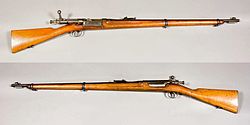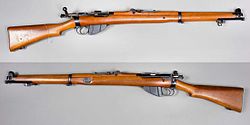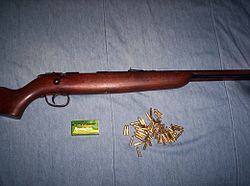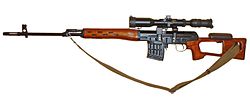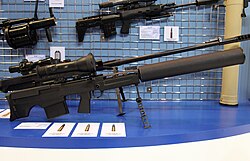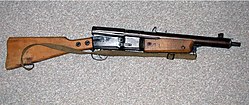A rifle is a firearm designed to be fired from the shoulder, with a barrel that has a helical groove or pattern of grooves ("rifling") cut into the barrel walls. The raised areas of the rifling are called "lands," which make contact with the projectile (for small arms usage, called a bullet), imparting spin around an axis corresponding to the orientation of the weapon.
There are various types of rifles, most notably the automatic rifle, the bolt-action rifle, the lever-action rifle and the semi-automatic rifle.













































